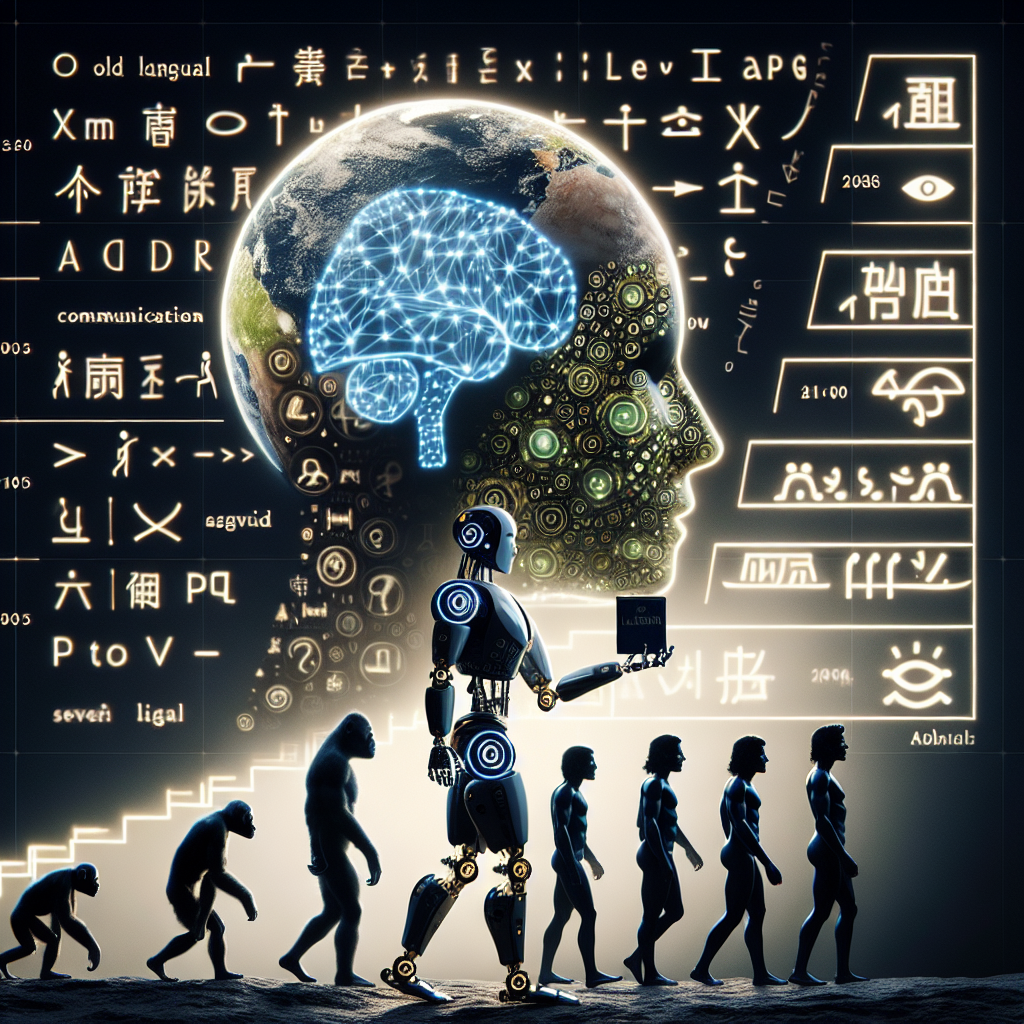Unleashing the Power of Language: The Evolutionary Edge in the AI Renaissance
In the digital age where artificial intelligence (AI) and machine learning are revolutionizing industries, a riveting discussion resurfaces about the profound impact of language on human cognition and the burgeoning field of AI. Trenton's recommendation of "The Symbolic Species" throws into sharp relief an argument that's as fascinating as it is foundational: language is not merely a tool for communication but a crucible for cognitive development. This profound insight sheds light on why language models (LMs) have seen explosive success and promises to recalibrate our approach to AI development. Let's dive into this vortex of ideas, where language serves as both the map and terrain in the quest for artificial intelligence that mirrors the depth and agility of the human mind.
The Essence of Language: A Cognitive Scaffold
At its core, the argument presented in "The Symbolic Species" captures an essential truth about human evolution. Language, with its rich tapestry of symbols and syntax, is more than a method for depicting reality. It's a scaffold upon which the edifice of human thought is constructed. For tens of thousands of years, language has evolved not just as a medium of communication but as a mechanism that shapes how we think, perceive, and interact with the world. This intricate symbiosis between language and cognition might just be the secret sauce powering the success of LMs in the AI domain.
The Triumph of Text: Why LMs Lead the Way
In the diverse ecosystem of AI research, where myriad modalities—from visual to auditory stimuli—are explored, language models enjoy a distinct advantage. This edge springs from the evolutionary honing of language as a universal cast for developing minds. Unlike the labor-intensive efforts to decode the right representation space for images in computer vision, language modelling, with its seemingly straightforward tactic of predicting the next token, turns complexity into an asset. This contrast underscores not just a technical divergence but a philosophical one. Language models thrive precisely because language itself is a treasure trove of distilled human experience, a ready-made framework ripe for algorithmic exploration.
Bridging Minds and Machines: The Multimodal Frontier
The conversation doesn't end with the triumph of text. As Trenton's recommended reading suggests, the success of LMs opens new vistas in our quest to build more human-like AI. The current frontier is multimodal AI, where the integration of language with other sensory modalities—visual, auditory, and beyond—promises machines with a richer understanding of the world. The challenge here is monumental: how to fuse these diverse streams of data into a cohesive whole that mirrors human perception. This endeavor not only requires technical ingenuity but a reimagining of what makes language so potent. It's not just about the words we use but how they interlace with our sensory experiences to create meaning.
The Quest for the Right Representation: A Tale of Two Modalities
The divergence in approach between language model researchers and their counterparts in computer vision and other fields hints at a broader inquiry: what is the optimal representation of knowledge for AI? Language, with its seamless ease of token prediction, offers a clue. It suggests that the secret to powerful AI might lie not in mimicking the raw complexity of sensory input but in capturing the abstract patterns through which humans navigate this complexity. This raises intriguing questions about the nature of intelligence itself and whether the path to AI that truly understands and interacts with the world in a human-like manner lies in the artful application of language as a cognitive blueprint.
Looking Ahead: The Linguistic Landscape of Future AI
As we stand on the cusp of what might be termed an AI renaissance, fuelled by insights into the primordial role of language in human cognition, the future beckons with possibilities. Will the continued evolution of language models usher in an era of AI that can not only process but truly comprehend and generate human-like responses? Will the integration of multimodal data enable machines to break free from the constraints of text and immerse themselves in the full spectrum of human experience?
The answers to these questions lie in the fertile ground between evolutionary biology, cognitive science, and cutting-edge AI research. As we delve deeper into the mysteries of language, we may find that the key to unlocking the potential of artificial intelligence is woven into the very fabric of our own evolutionary past.
In our pursuit of AI that mirrors the depth of human intelligence, we are reminded that language is not just a tool but a testament to our cognitive ingenuity. The journey ahead is as daunting as it is exhilarating, but one thing is clear: in the realm of AI, language is both the path and the destination.
For those intrigued by the intersection of language and AI, the following resources provide a deeper dive into the subject:
- DeepMind's Introduction to Language Models
- Stanford's Natural Language Processing with Deep Learning
As we navigate this linguistic landscape, the insights gleaned from "The Symbolic Species" and experts like Trenton serve as guiding stars. They remind us that at the heart of AI's future, language stands as a beacon of human ingenuity, a bridge between the minds of our ancestors and the machines of tomorrow.
Related News
- Unraveling the Mysteries of Language Models: A Deeper Dive into AI's Intellectual Evolution
- Unraveling the Wizardry Behind Large Language Models: A Comprehensive Guide to AI’s Verbal Architects
- Delving Deep Into the Mind of Machine Learning: The Fusion of Code, Language, and Logic
- Unleashing the Power of Large Language Models: A Dive into the Future of AI
- Diving Deep into the Latest AI Whirlwind: An Analysis That's Both Electric and Enlightening
